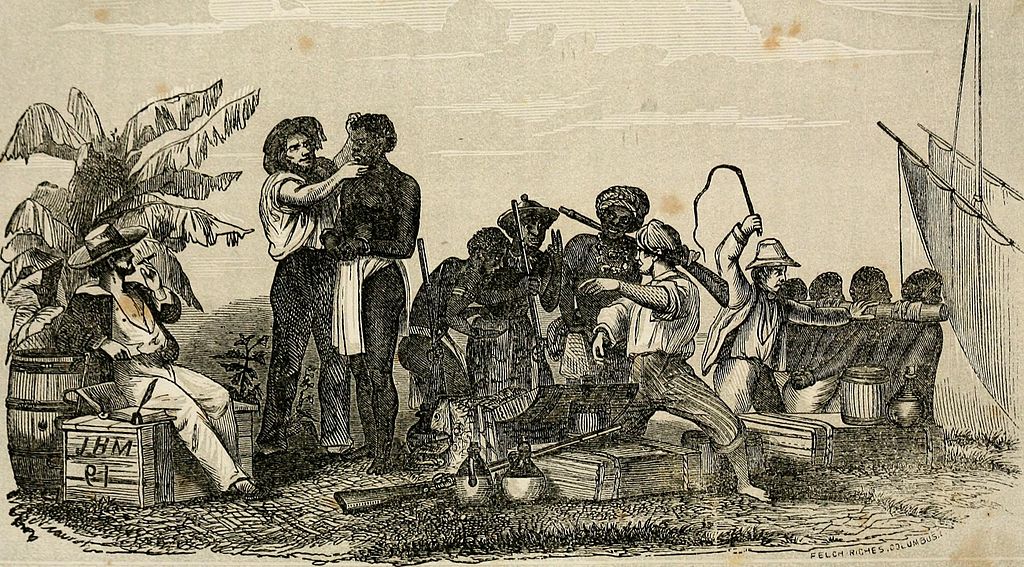The Nature Of Evidence
Evidence.
When engaging with others about the truth of the Christian worldview, I hear this demand quite a lot. “I need evidence,” people will say. Let me start by saying this is a good requirement. We should hold our views based on reason and evidence. But, is there evidence for what Christians believe? I mean, we’re talking about believing in forces largely unseen and events that happened 2000 years ago. What kind of evidence do we have for that?
The Evidence That Stopped A Mad Bomber
On May 25, 1978, a suspicious package was found in a parking lot of Northwestern University. When a security guard examined the package, it exploded – damaging his hand. This bomb would be the first in a chain of 16 that terrorized the country from 1978 until 1995. The Unabomber would be seen planting one of his devices only once – large aviator glasses and a hood obscuring much of his identity. Most of his devices were sent through the mail. Painstaking efforts were used to remove any traceable evidence. No fingerprints were ever found. The explosive devices were varied and the targets had nothing in common. And, it wasn’t until the killer released his 35,000-word manifesto that the case was able to be solved. Using the language in the letter, investigators were able to determine the gender, age, ethnicity, and area the suspect grew up in. This helped them to form a profile of the Unabomber. And, once they had a sample of writing from a known source, they were able to catch their guy.
What do you mean by “evidence”?
Any time we engage with someone in a discussion, we need to make sure we are on the same page about the definition of words. In this case, when people say they need evidence, we need to understand what they mean by evidence. We all know what evidence is in general, but the point of this question is more along the lines of what do you think counts as evidence? What kind of evidence are you looking for?
What Counts As Evidence?
Normally, when I ask someone what they mean by evidence, they will add the term “empirical” somewhere. And, by empirical, what they mean is testable or repeatable. Or reproducible in a lab. These are part of the scientific method, and we have been trained from the first day we enter school that this is the best way we can come to knowledge. So, if it can’t be tested or repeated, it can’t be relied upon.
But, if you ask a police detective like J. Warner Wallace what counts as evidence his definition is pretty simple – EVERYTHING counts as evidence! What someone said, what they could have said but didn’t, how they said something, their body language, where they were, where they could have/should have been but weren’t, past interactions with the victim, etc. All of these things can be used as evidence by a detective trying to solve a crime. And most of it isn’t testable in a lab. Or repeatable most of the time.
Direct vs Indirect Evidence
In a courtroom, there are two categories of evidence. The first is direct evidence. The only thing considered direct evidence is eyewitness testimony. Only one person ever saw Ted Kaczynski set a bomb in 17 years of activity. This may have been enough to convict him on one charge – but not all 16.
The second type of evidence is indirect evidence. This is everything else. Another term for this evidence is circumstantial evidence. In the Unabomber case, this was the letter, the words in the letter, the handwriting of the letter, and the second set of letters given to investigators by Kaczynski’s brother for comparison. It was all the chemicals and supplies they found in Kaczynski’s shack. They were all common household chemicals and items – none of which would have raised suspicion on their own.
The Value Of Direct and Indirect Evidence
For some reason, our society has developed a bit of mistrust when the word “circumstantial” gets used. We have this impression that indirect/circumstantial evidence is less valuable than eyewitness testimony. But, as Warner points out, the jury instructions on evidence in California are very clear – both types of evidence have the same value. The jury instructions state that:
As far as the law is concerned, it makes no difference whether evidence is direct or indirect. You may choose to believe or disbelieve either kind.Whether it is direct or indirect, you should give every piece of evidence whatever weight you think it deserves.
CACI No. 202. Direct and Indirect Evidence
So, if an eyewitness says “It was raining outside” or we find a wet umbrella and wet shoes next to the door, we can make the same inference – it was raining outside.
One of the hard parts about making circumstantial cases is that the evidence doesn’t talk to us. We can’t ask it questions like “Why are you here at this crime scene”. We have to use deductive reasoning to determine the best explanation for why these particular pieces of evidence are present. But, sometimes, the fact that the evidence can’t talk actually helps! Because, as any detective will tell you, witnesses lie. Or they get things wrong. Not all of them, of course. But some of them do because of a relationship to the suspect or the victim or feelings about a certain situation. In the case of the Zodiac Killer – one of the most famous unsolved cases in American history – the police had driven by the guy who was likely the killer but ignored him because they were told the suspect was black and this guy they saw walking away from the area of the crime scene was white. Witnesses get it wrong sometimes.
Some people will still insist that circumstantial evidence isn’t as valuable as eyewitness testimony. In a talk on the nature of evidence, J. Warner Wallace lets us know that 85% of cases are solved with circumstantial evidence. Also, if we required the ability to interview eyewitnesses to an event, then we couldn’t do history. There is no one around for us to interview in regards to things like the Civil War or the Declaration of Independence or the time when dinosaurs roamed the Earth. In order to do history, we have to look at indirect evidence – things that were written, where people were when events occurred, and, in the case of dinosaurs, we have to look at the fossil record. None of these things are direct evidence. We can’t interview the eyewitnesses. We can’t even interview the people who interviewed the eyewitnesses.
One of the most popular theories on the diversity of life is Darwin’s theory of evolution. But, Darwin didn’t observe any species turning into other species; he observed small, microevolutionary changes and theorized that this chain of changes went backward in time until we got to the beginning of life. No one was there to observe new species being created. It’s a theory based solely on circumstantial evidence.
Evidence and Historical Events
Events like crimes – or the beginning of the universe or the beginning of life or any other event from history – are unique points in time. A number of factors come together in a way to cause or explain an event. These events cannot be recreated in a lab in their entirety. We can get some of the clues from our knowledge gained through science and experimentation, but not all of it. When trying to figure out events from the past that have no eyewitness, we can try to recreate models to explain what happened, but we won’t get the whole picture.
For example, if a dead body is found in the woods, we can determine how long it has been there (because science helps us understand the rate of decay), where else the body has been recently (maybe some dirt under the fingernails), who had been around the person before they died (DNA evidence), and likely their cause of death. All of these things can come from the knowledge we have gained in a lab. But, the lab can’t tell us why the body was there. If the investigation determines the person was murdered, the lab can’t give us the reason they were murdered. That requires a different kind of evidence that isn’t necessarily physical or empirical or reproducible in a lab setting.
Evidence For Christianity
Trying to make the case for the Christian worldview – or any other worldview for that matter – requires evidence to show why we believe what we believe to be true. The good news is, that Christianity is based on a historical event that has been well documented and is supported by multiple pieces of eyewitness testimony and indirect evidence. The eyewitnesses documented what they observed. And, just like with the Unabomber’s Manifesto, we can learn a great deal from the words they used and the words they didn’t use. We can examine the series of events to see what happened. Based on the language they used, we can tell where the witnesses came from, what type of education they had, and when they might have written their statements.
We can also use indirect evidence to determine how the universe came into existence. We don’t get the benefit of eyewitness testimony there, but a testimony of sorts has been left behind for us to uncover. The same can be said for the creation of life. And even whether or not God exists.
Requiring evidence for the positions you hold is a good thing. We should not believe things that go against what the evidence shows us. But, we also have to understand what counts as evidence. Direct observation is great when you have it. However, we can still learn about historical events and the nature of reality by other types of evidence. Law enforcement uses indirect circumstantial evidence frequently to solve cases and we can do the same as we examine the Christian worldview to see if it is true or not.
Share This Story, Choose Your Platform!
latest video
news via inbox
Nulla turp dis cursus. Integer liberos euismod pretium faucibua








the lab can’t tell us why the body was there or why they were murdered in the first place…
Since you did not start with the premise that the body found was murdered, to interject it seems inconsistent with the rest of the paragraph. It should say, “…or, if the coroner determines the cause of death shows foul play, why they were murdered in the first place.” Or something like that.
Hi Stanley,
Thank you for your comment. I edited the sentence to work more better ;)